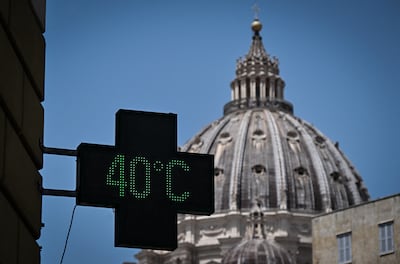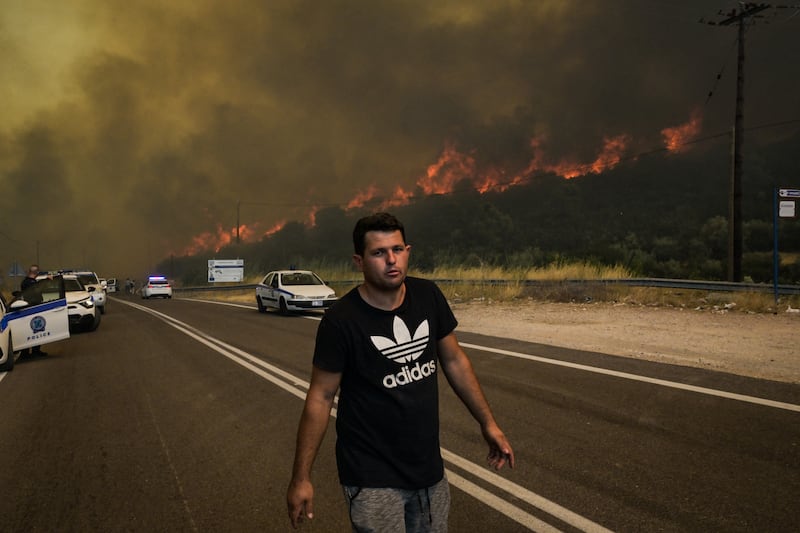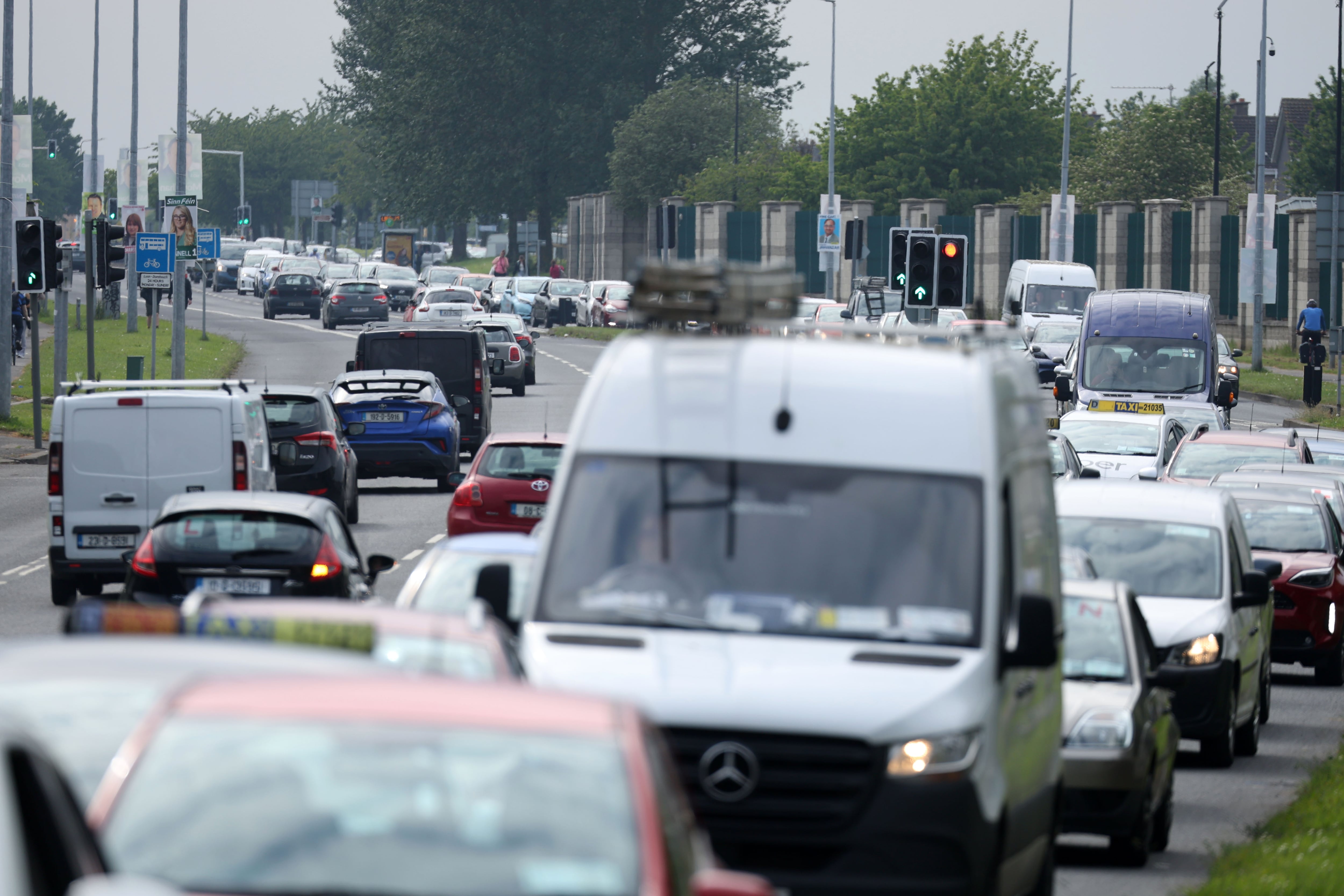Much of southern Europe is sweltering in an oppressive heatwave with temperatures routinely exceeding 40 degrees. There are indications some places are probably in the throes of a merciless push towards an unprecedented 50 degrees that is close to the limits of human survival – if not tomorrow, next month or next year and certainly before 2030.
The climate disturbance fuelled by carbon emissions extends throughout Europe, as indicated by extreme heat in Spain triggering flash floods; tropical nights in Andorra high in the Pyrenees; and wildfires in mountainy Switzerland.
This is uncharted territory for the Continent, which is warming at twice the rate of other parts of the world. This manifestation of the climate crisis is exposing the vulnerability of hundreds of millions of people to extreme heat; yet another sign its clenched teeth are biting hard on Earth and refusing to let go.

What about the rest of the world?
Extending the focus beyond the cauldron of the Mediterranean to the northern hemisphere provides a shocking tableau of what an overheating world looks like. It illustrates the dangers that countries in the Global South have been suffering with for years.
READ MORE
The Extreme Temperatures Around The World app is peppered with red dots, with record warming across three continents simultaneously.
The extremes are concentrated on the US and China, two of the world’s worst carbon polluters. China recorded its hottest day on Sunday when the mercury hit 52.2 degrees. In the US, water just offshore in Florida Bay reached 37 degrees last week. It is being described as “hot-tub hot”. This week Phoenix exceeded a record 43 degrees for 19 days in row – with more ahead.
[ ‘Hell on earth’: Phoenix’s extreme heatwave sparks calls for actionOpens in new window ]
Montreal got a snapshot of what a climate-induced dystopian future might look like with weeks of dense smoke triggering smog alarms, the consequence of 900 wildfires burning across Canada. It suppressed sunlight, and then a tornado walloped the city.
The world’s largest and most populous continent is experiencing record monsoon rainfall. This month torrential rains inundated parts of Japan, China, South Korea and India, upending the lives of millions and causing flash floods, landslides and power cuts.
“Everywhere you look in the world, the extremes have now seemingly reached a new level,” climate campaigner Al Gore observed in the New York Times. “The temperatures in the North Atlantic and the unprecedented decline of the Antarctic sea ice, both simultaneously. We see it in upstate New York, we see it in Vermont, we see it in southern Japan, we see it in India. We see it in the unprecedented drought in Uruguay and in Argentina ... Every night on the TV news is like taking a nature hike through the Book of Revelation.”
This is as predicted by eminent climate scientists, though for many it has come sooner than anticipated. On three days within a week earlier this month, three daily records were set for global average temperatures.

What’s causing the current heatwave in Europe?
There are particular exacerbating circumstances affecting Europe. “The North Atlantic region is particularly warm; in fact record warm by a large margin,” according to Dr Karsten Haustein of the Climate Service Centre in Germany. “Part of it is down to a weak Azores high [pressure weather system] and associated weak trade winds that reduced the mineral dust production in North Africa.”
As a feedback, the ocean waters can warm more than usual – the sea off northwest Ireland is four to five degrees warmer than normal. Whether or not the naturally occurring El Niño phenomenon is to blame for the weak Azores high is not clear, but it might have played a role due to so-called global teleconnection patterns in the atmosphere.
Another factor being considered is the impact of reduced ship emissions due to changed regulations in 2020. Less cooling aerosols from ships might have helped to accelerate warming temporarily.
This is also true over the North Pacific, where El Niño is warming the central Pacific, he says. “Of course, the main driver for the record warmth is human-induced climate change, with land temperatures seeing record values at various places as an inevitable consequence.”
But there is also a pattern throughout the northern hemisphere, notably the large-scale wave-like wind pattern in its upper atmosphere known as the Jet Stream, a fast-moving wind that flows from west to east at a global scale.
“The Jet Stream from North America to Europe is stuck in a position that is roughly south of the English Channel in a U-shape flow, with both the trough and the crest of this wave lying south of the UK,” explains Dr Malcolm Mistry, a specialist in climate and geospatial modelling at London School of Hygiene and Tropical Medicine.
“To the north of the Jet Stream, we have cooler Arctic air and areas of low pressure, which in turn bring rain spells to the UK [and Ireland]. To the south, we have an opposite weather pattern with a high-pressure system stalled drawing hot air from North Africa and maintaining the hot dry conditions.”
A similar pattern currently exists over the US and parts of Asia, thereby increasing temperatures to above normal conditions that would be expected this time of the year.
Are ‘blocking events’ becoming more frequent or longer, and is climate change playing any role in that?

The current pattern is not uncommon in historical weather trends but recent years suggest they are becoming more persistent in nature. But more research is required to confirm this hypothesis.
“Whether climate change can make such blocking patterns more frequent, erratic and longer is something that the researchers have been examining using climate model simulations, and again, we need to find a strong scientific consensus to say so,” Mistry says.
Will El Niño make things worse?

Unquestionably, yes. The above-average Pacific Ocean temperatures are driving the current El Niño but its full effects globally will only become apparent in the coming months and next year. It will fuel yet higher temperatures and extreme weather events with human health consequences, Haustein says – but the extent is not yet clear.
El Niño is driven by changes in the Pacific trade winds. During recent decades or so, there has been a tendency towards years of El Niño’s more cooling counterpart, La Niña. It is still under debate whether this is a response of the climate system due to man-made warming or a temporary fluke associated with natural variability.
“That said, there is an increasing amount of evidence that we should expect more La Niña years, interrupted from fewer, but potentially stronger El Niño events.” Mistry adds.
Heatwaves seem to be lasting longer – is this a trend we’ll have to get used to?
The warmer the global average temperature, the more intense – and thus longer – heatwaves become. And there is every indication they will become more frequent and more deadly.
This will continue as long as we keep warming the planet by virtue of emitting greenhouse gases into the atmosphere and burning fossil fuels in particular.
“The current state of the oceans both in the Atlantic and Pacific basins show by-and-large above-normal sea surface temperatures. This in turn can have larger effects on global-scale weather patterns, one of them being slow-moving high-pressure weather patterns in some parts, and conversely low-pressure systems bringing unseasonal or heavy rainfall elsewhere,” Mistry notes.
The current positioning of the stalled high-pressure system over southern Europe with the Jet Stream bringing in dry hot air largely from sub-Saharan and northern Africa makes this a recipe for what is currently being experienced in Italy, Spain and Greece.
Are we facing hotter and wetter extremes in Ireland?

The threat of longer, more intensive heatwaves applies to Ireland, though our island location off northwest Europe means we will continue to benefit from cooling effects of the Atlantic Ocean.
So the consequences for us are more likely to be more ferocious storms with abnormal coastal surges; more extreme flooding, interruption to food production, and heightened risk in coming years of inundation of our cities located at the mouth of estuaries. Direct hits by hurricanes become more likely.
In short, there will be less heat stress, compared with mainland Europe, leading to hospitalisations, air pollution arising from wildfires and excess deaths. But that does mean our distinct mix of extreme weather will not lead to death and destruction – not forgetting the consequences of drought including water shortages.
Publication by Met Éireann of 30-year averages of rainfall and temperature reflects what has happened to Ireland’s climate and what is likely to face us. There has been an overall increase in air temperature compared with the previous 30-year period, with the average yearly air temperature standing at 9.8 degrees (1991-2020). This represents an increase of 0.7 degrees. Mean temperatures are higher across the country for all seasons.
The increase might be small – and bearable – but the world is currently losing the race to keep global average temperature rise to within 1.5 degrees above pre-industrial levels.
A 5 per cent increase in sunshine compared with 1961-1991 might be a surprise and welcome for its feel-good factor and the renewable energy opportunity it provides, but there is little comfort beyond this. “We know that the atmosphere is warming and what we’re seeing at the local and national scale fits the international picture,” said Met Éireann climatologist Mary Curley.
It is almost as if we are seeing the emergence of a two-season year with winter and autumn being the wet season and, conversely, spring and summer being the dry season. There is every indication it will get warmer and wetter over the next 30 years. The data is a crucial benchmark for Ireland’s weather and climate conditions and serves as an important resource for Government and relevant stakeholders to enable informed decision-making to address turbulence immediately ahead.
Where is hope in the face of current climate mayhem?

There is no sugar-coating the alarming heat being experienced throughout the world.
“Europe is realising too late how climate change is affecting them. We have been warning about the terrible consequences in countries in the Global South that are much more vulnerable the extreme weather and without any means to mitigate, adapt or recover against it,” says Karol Balfe, chief executive of ActionAid Ireland. “Now, Europe is suffering this more and more. The heatwaves happening now are just one example of how we are going to have to adapt to a new climate reality, and we have the responsibility to support other countries to do the same.”
“Nothing less than drastically cutting greenhouse gas emissions is needed, which means “polluting economies must undergo a total transformation within 10 years”, she adds.
The extreme weather is already leading to crop losses, high food prices, loss of life and climate-driven migration. This will continue to get worse, and wipe out entire ecosystems, unless we rapidly make the switch from fossil fuels to renewables and clean power, says Prof John Marsham, School of Earth and Environment at the University of Leeds.
He echoes the need for governments to act decisively. “If we don’t act soon, future news headlines won’t so much be about holidays, but about food prices, and food and water supplies.”

“Every second counts as the faster we stop burning fossil fuels and releasing other planet-warming emissions, the more quickly global temperatures can stabilise,” Gore underlined. Clean energy is cheaper than ever, while EV sales are surging, turbocharged by government subsidies. Put that all together, he predicts, and developed economies could force down their emissions with surprising speed.
“We know how to fix this. We can stop the temperatures going up worldwide with as little as a three-year time lag by reaching net zero. And if we stay at true net zero, we’ll see half of the human-caused CO2 coming out of the atmosphere in as little as 30 years.”
But “because of where we’re starting from, there is no smooth path, and if we’re going to stop it from being destructive, it’s going to involve inconvenience”, says Friends of the Earth chief executive Oisín Coghlan. Yet, our leaders are not accepting reality and not reflecting it to society in a way that enables emergency action, he believes.
While people are really waking up to the fact that the man-made climate crisis is very much to blame, and that we have to act, “those of us already on board need to step it up, but also we desperately need more people showing up for climate action ... We’re beyond the brink and we’re beyond reason but I don’t think we’re beyond hope.”


















